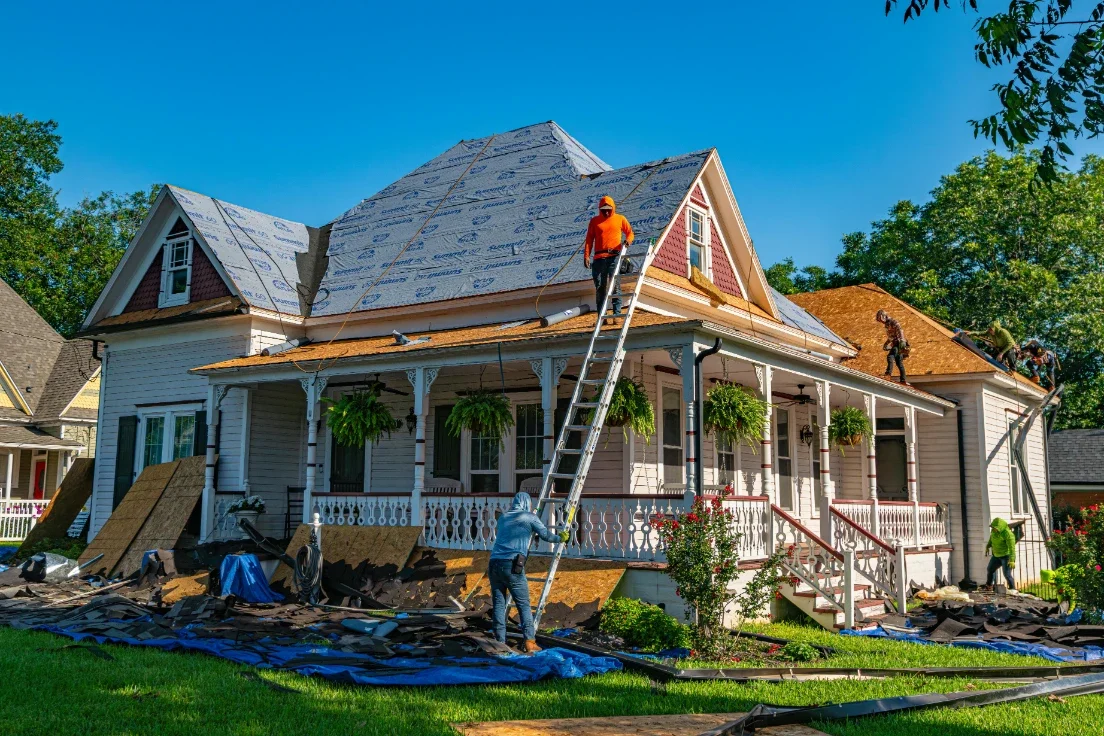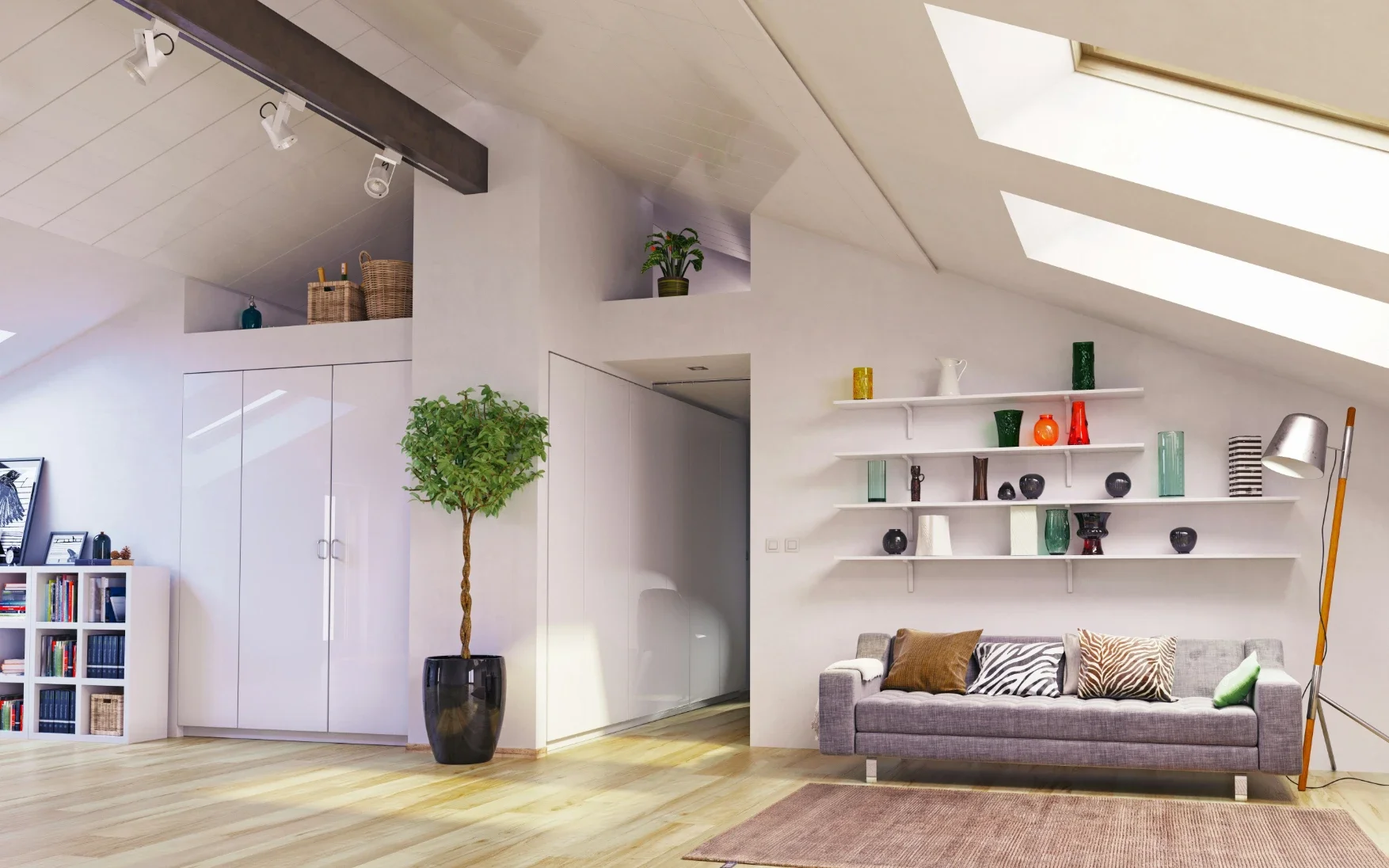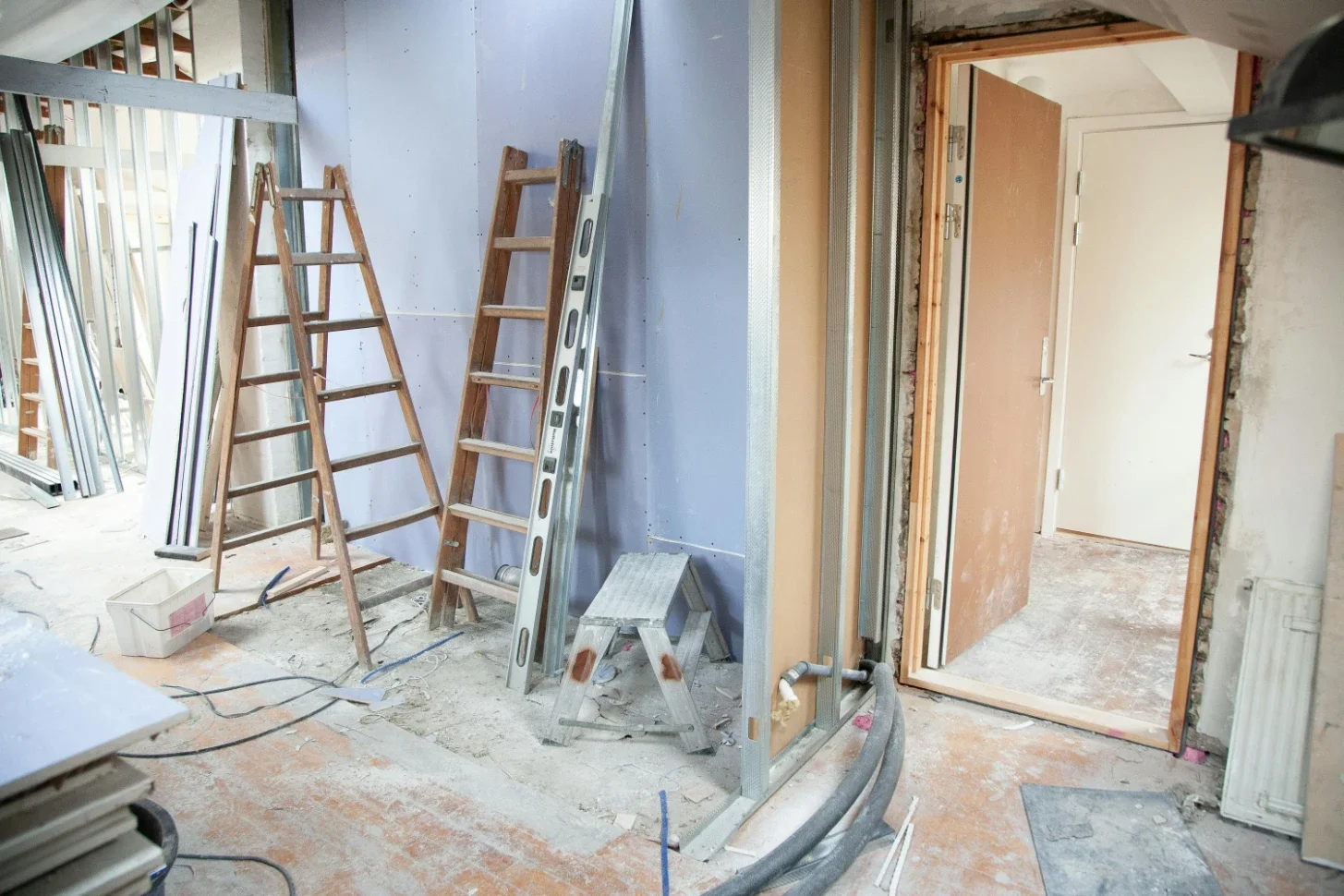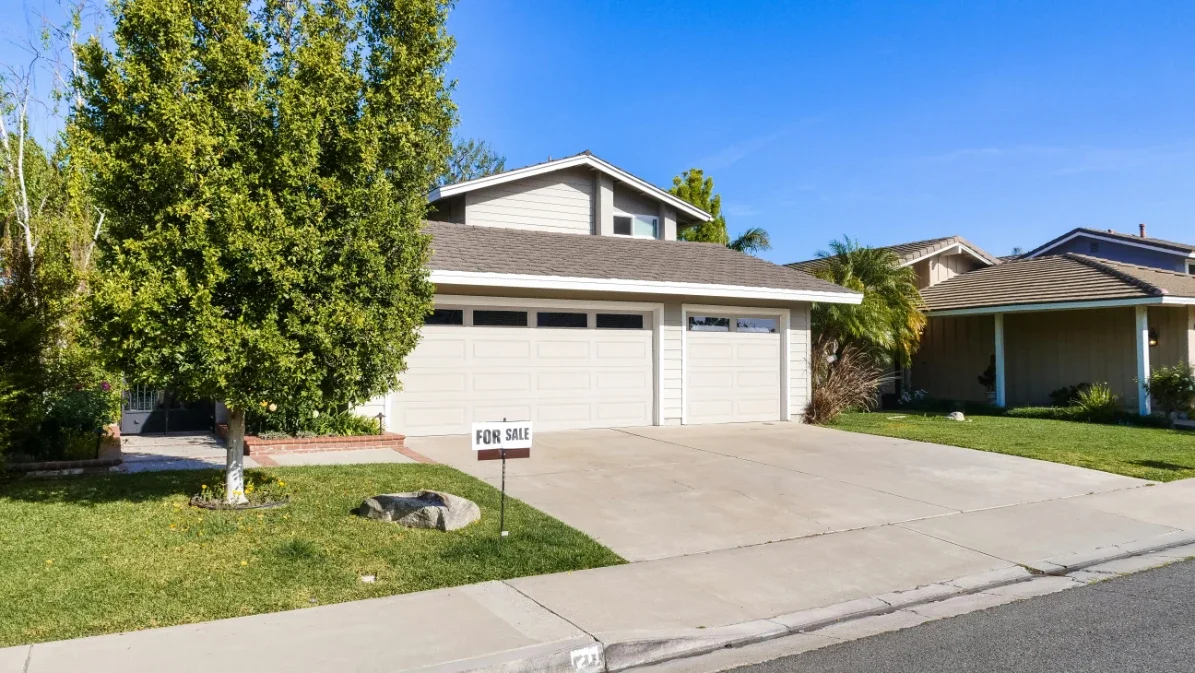How to Achieve Modern Industrial Interior Design
Transform your space with modern industrial interior design. Discover expert tips and ideas to blend raw materials and contemporary aesthetics for a stylish, urban look.
Ever walked into a space and felt that perfect blend of raw edge and sleek sophistication? That’s the magic of modern industrial interior design. It’s a style that marries the old with the new, combining the gritty charm of industrial elements with the clean lines of contemporary decor. If you’re intrigued by this effortlessly cool aesthetic and want to bring it into your home, you’re in the right place. In this guide, we’ll walk you through how to achieve modern industrial interior design, turning your space into an urban masterpiece.
What is Modern Industrial Interior Design?
Before diving into the nitty-gritty, let’s nail down what modern industrial interior design actually is:
Raw Materials
Think exposed brick, steel beams, and reclaimed wood to create a rugged, unfinished look. Use concrete floors, metal fixtures, and distressed leather to enhance the industrial vibe. Incorporate elements like piping, ductwork, and Edison bulb lighting to add authenticity and character.
Open Spaces
Inspired by warehouses and lofts, this style often features open floor plans with minimal walls. Create a sense of flow and spaciousness by using large windows, high ceilings, and open shelving. Use furniture and area rugs to define different zones within an open space, maintaining functionality without sacrificing openness.
Functional Aesthetics
Every piece has a purpose, blending form and function seamlessly. Choose furniture that is both stylish and practical, like multipurpose tables and storage solutions. Opt for built-in shelving, modular units, and minimalist designs to keep the space organized and efficient.
Neutral Colors
A palette dominated by grays, blacks, and whites, with occasional pops of color for visual interest. Use neutral tones for walls, floors, and larger furniture pieces to create a cohesive backdrop. Introduce pops of color through accessories, artwork, and textiles to add warmth and personality.
If this style speaks to you, let’s dive into the specifics of how to achieve modern industrial interior design in your home. By focusing on raw materials, open spaces, functional aesthetics, and a neutral color palette, you can create a stylish and inviting modern industrial space.
Why Choose Modern Industrial Interior Design?
So, why go for this particular style? Here are a few compelling reasons:
Timeless Appeal
It combines classic industrial elements with contemporary flair, ensuring your space feels both current and enduring. The use of raw materials like exposed brick and reclaimed wood offers a sense of history and authenticity. Modern touches, such as sleek metal finishes and minimalist furniture, keep the look fresh and up-to-date. This blend of old and new creates a dynamic and lasting aesthetic that doesn’t easily go out of style.
Versatile
Works well in both large, open spaces and smaller, more compact areas. In larger spaces, the style enhances the grandeur with high ceilings and expansive layouts, creating an airy, open feel. In smaller spaces, it maximizes functionality with smart storage solutions and multipurpose furniture. The neutral color palette and simple design principles can adapt to various room sizes and shapes, making it a flexible choice for any home.
Unpretentious Elegance
It’s stylish without being fussy, striking a perfect balance between rugged and refined. The raw, unfinished elements like exposed brick and visible ductwork add a touch of ruggedness. At the same time, polished surfaces, clean lines, and thoughtful decor choices introduce sophistication. This balance makes the space feel inviting and comfortable, without sacrificing style or elegance.
By combining timeless appeal, versatility, and unpretentious elegance, modern industrial interior design offers a unique and compelling approach to home decor. It’s a style that effortlessly blends form and function, making your space both beautiful and practical.
Step-by-Step Guide on How to Achieve Modern Industrial Interior Design
1. Start with a Neutral Color Palette
The foundation of any modern industrial space is a neutral color palette. Here’s how to create it effectively:
Base Colors
Stick to shades of gray, black, white, and beige. These colors provide a clean canvas and enhance the industrial vibe. Use varying tones of gray for walls, floors, and larger furniture pieces to create depth and interest without overwhelming the space. Incorporate black elements through metal fixtures, lighting, and accessories to add a touch of sophistication and contrast. White can be used for ceilings, trim, and certain furniture pieces to brighten up the space and maintain a clean, airy feel. Beige and other neutral tones can be added through textiles, such as rugs, cushions, and throws, to soften the look and add warmth.
Accents
Add warmth and depth with earthy tones like rust, copper, and deep green. Introduce these colors through accent pieces such as throw pillows, artwork, and decorative items. Use copper or rust-colored light fixtures and hardware to bring a touch of industrial warmth. Incorporate deep green through plants or botanical prints, adding a natural element that complements the industrial materials. Consider using reclaimed wood or leather furniture in these accent colors to add texture and richness to the space.
By using a neutral color palette with strategic accents, you can create a balanced and inviting modern industrial space that feels cohesive and stylish. The base colors set a strong foundation, while the accents add personality and warmth, ensuring a dynamic and appealing decor.
2. Embrace Raw Materials
Raw materials are the hallmark of industrial design. Here’s how to incorporate them effectively:
Exposed Brick
If you’re lucky enough to have exposed brick walls, celebrate them by keeping them bare or applying a clear sealant to protect and enhance their natural texture. If not, consider using brick veneer or wallpaper that mimics the look of real brick for a similar effect. Exposed brick adds a rugged, authentic feel to the space, serving as a striking focal point. Pair brick walls with sleek, modern furnishings to create a balanced look that combines old and new elements seamlessly.
Steel and Iron
Use metal in furniture, fixtures, and accents to emphasize the industrial aesthetic. Think steel beams for structural elements, iron shelving units for storage, and metal light fixtures for a bold statement. Incorporate steel or iron in tables, chairs, and bed frames to reinforce the industrial theme. Metal accents like handles, knobs, and frames can add subtle yet impactful touches throughout the space.
Reclaimed Wood
Incorporate reclaimed wood in flooring, furniture, or decor pieces for a touch of warmth and history. Use reclaimed wood for dining tables, coffee tables, and headboards to introduce a rustic charm. Add wooden beams or panels to ceilings or walls to enhance the industrial look. Reclaimed wood brings a sense of character and uniqueness, often showcasing natural imperfections that add to its appeal.
By celebrating exposed brick, using steel and iron, and incorporating reclaimed wood, you can create a modern industrial space that feels authentic, warm, and stylish. These raw materials are essential for achieving the rugged yet refined aesthetic characteristic of industrial design.
3. Opt for Open Floor Plans
Open floor plans are a key characteristic of industrial spaces. Here’s how to incorporate them effectively:
Minimal Walls
Minimize the number of walls to create a spacious, airy feel that allows natural light to flow freely throughout the space. Use open shelving or partial walls to delineate different areas without fully closing them off, maintaining a sense of openness. Incorporate large windows and glass partitions to enhance the feeling of space and light. Avoid clutter and keep the layout simple to maximize the open floor plan's impact.
Multifunctional Areas
Design areas that serve multiple purposes, like a kitchen island that doubles as a dining table. Use versatile furniture such as a fold-out desk or a sofa bed to make the most of limited space and add functionality. Create a home office within a living area using modular furniture that can be easily reconfigured as needed. Integrate storage solutions that serve as room dividers, such as bookshelves or cabinets, to organize the space while maintaining openness.
Flow and Connectivity
Ensure a seamless flow between different functional areas, such as the living room, kitchen, and dining area. Use cohesive design elements like consistent flooring, color schemes, and materials to unify the space. Arrange furniture in a way that promotes easy movement and access between different zones. Consider creating visual boundaries using rugs, lighting, or distinct furniture groupings to define each area without obstructing the overall open plan.
By minimizing walls, designing multifunctional areas, and ensuring flow and connectivity, you can create an open floor plan that epitomizes modern industrial design. This approach fosters a sense of spaciousness, functionality, and cohesion, making the space both practical and aesthetically pleasing.
4. Focus on Functional Furniture
In modern industrial design, every piece of furniture should serve a purpose. Here’s how to choose the right furniture:
Simple and Sleek
Choose furniture with clean lines and minimal ornamentation to emphasize functionality and simplicity. Opt for pieces made from materials like metal, wood, and leather, which align with the industrial aesthetic. Avoid overly decorative elements and focus on sleek, streamlined designs that contribute to a cohesive look. Simple and sleek furniture helps maintain the open, airy feel of industrial spaces.
Multi-Purpose Pieces
Opt for pieces that can serve multiple functions, like a storage ottoman that provides seating and hidden storage. Consider a sofa bed for guest accommodations in small spaces or a desk that doubles as a dining table. Use modular furniture that can be easily reconfigured or expanded to adapt to changing needs. Multi-purpose furniture maximizes space efficiency and adds versatility to the design.
Vintage Finds
Incorporate vintage or reclaimed furniture for an authentic industrial feel, adding character and history to the space. Look for items like old factory carts, metal lockers, or reclaimed wood tables that have a worn, industrial look. Mix vintage pieces with modern elements to create a balanced and eclectic decor. Vintage finds contribute to the uniqueness of the space, making it feel personalized and lived-in.
By selecting simple and sleek furniture, opting for multi-purpose pieces, and incorporating vintage finds, you can create a modern industrial space that is both functional and stylish. Each piece should serve a clear purpose, enhancing the practicality and aesthetic of your home.
5. Add Industrial Lighting
Lighting plays a crucial role in setting the mood and enhancing the industrial aesthetic. Here’s how to incorporate it effectively:
Pendant Lights
Hang pendant lights with exposed bulbs for a raw, industrial look that showcases the beauty of simple, utilitarian design. Choose fixtures made from metal, such as steel or iron, to reinforce the industrial feel. Arrange multiple pendant lights in a row over a dining table, kitchen island, or hallway to create a dramatic and cohesive lighting scheme. Consider using Edison bulbs for their warm glow and vintage appearance, enhancing the overall ambiance.
Floor Lamps
Use floor lamps with metal finishes and simple, clean lines to add both illumination and style. Opt for adjustable floor lamps with movable arms to direct light where it’s needed, adding functionality to the space. Place floor lamps in corners or next to seating areas to provide task lighting and enhance the room's decor. Metal floor lamps with exposed bulbs or cage designs add an authentic industrial touch.
Task Lighting
Incorporate task lighting in areas where functionality is key, like over a kitchen island, a desk, or a reading nook. Use adjustable wall-mounted lamps or swing-arm sconces to provide focused light for specific tasks. Choose fixtures with industrial design elements, such as metal shades or articulated arms, to blend seamlessly with the overall decor. Task lighting ensures that workspaces are well-lit and practical, enhancing both the utility and aesthetics of the room.
By integrating pendant lights, floor lamps, and task lighting, you can create a layered lighting scheme that sets the mood and enhances the industrial aesthetic. Each type of lighting serves a specific purpose, ensuring the space is both functional and visually appealing.
6. Incorporate Statement Pieces
Statement pieces can elevate your space and add a unique touch. Here’s how to incorporate them:
Art and Decor
Choose bold, industrial-inspired artwork and decor items to add character and interest. Opt for oversized clocks, metal sculptures, or abstract art with industrial motifs like gears or machinery. Use vintage signs, blueprints, or black-and-white photography to add a historical and artistic element. Incorporate large wall art pieces to make a visual impact, creating a focal point in the room.
Feature Walls
Create a feature wall with reclaimed wood, adding warmth and texture to your space. Expose brick walls to enhance the industrial aesthetic and add rugged charm. Consider using a bold paint color or wallpaper with geometric patterns to create a striking backdrop. Feature walls can highlight specific areas, such as behind a bed, sofa, or dining table, drawing attention and adding depth to the decor.
Large Furniture
Use large, statement furniture pieces like a leather sofa to create a focal point in the living room. Opt for a reclaimed wood dining table to serve as the centerpiece in the dining area, combining functionality with a rustic appeal. Choose substantial pieces like industrial-style bookcases, oversized armchairs, or metal-framed beds to anchor the room. Ensure that these statement pieces complement the overall design and maintain a cohesive look.
By incorporating bold art and decor, creating feature walls, and using large statement furniture, you can elevate your space and add a unique touch that enhances the modern industrial aesthetic. These elements serve as focal points, adding depth, character, and a personalized flair to your home.
7. Use Textures to Add Depth
Textures are essential in creating a cozy, inviting industrial space. Here’s how to incorporate them:
Rugs and Textiles
Layer rugs with different textures and patterns to add warmth and visual interest. Choose rugs made from natural fibers like wool, jute, or sisal for a tactile, organic feel. Mix and match patterns such as stripes, geometrics, and solids to create a dynamic look. Place rugs under key furniture pieces like the sofa, dining table, or bed to anchor the space and add comfort.
Soft Furnishings
Use soft furnishings like cushions, throws, and upholstered furniture to balance the hardness of raw materials like metal and concrete. Select cushions and throws in a variety of fabrics, including velvet, cotton, and faux fur, to create a layered, cozy feel. Choose upholstered furniture with plush, inviting fabrics that contrast with the industrial elements. Incorporate a variety of colors and patterns to add depth and personality to the space.
Natural Elements
Incorporate natural elements like plants and wooden accessories to soften the industrial look. Use potted plants, hanging greenery, or large indoor trees to introduce a touch of nature and enhance the air quality. Add wooden accessories such as bowls, trays, and picture frames to bring warmth and texture. Consider wooden shelving or storage units to blend functionality with a natural aesthetic.
By layering rugs and textiles, incorporating soft furnishings, and adding natural elements, you can create a cozy, inviting industrial space that balances the rawness of industrial design with warmth and comfort. These textures add depth and make the space feel more lived-in and welcoming.
Tips for a Cohesive Look
Stick to Your Theme
Consistency is key when creating a cohesive industrial theme. Ensure all elements, from furniture to accessories, align with this rugged and utilitarian style. Choose furniture made of raw materials like metal, wood, and concrete, featuring clean lines and functional designs. Select accessories that complement the industrial aesthetic, such as exposed light bulbs, metal fixtures, and vintage-inspired decor. Stick to a color palette of neutral tones like grey, black, and brown to maintain a unified appearance. Incorporate industrial motifs like exposed pipes, brick walls, and reclaimed wood throughout the space. By thoughtfully coordinating every detail, you can create a harmonious and edgy environment that perfectly embodies the industrial style.
Balance Old and New
Mix vintage and modern pieces to create a balanced, harmonious look. Combine classic, timeless furniture with sleek, contemporary accents to achieve a stylish blend. For instance, pair a vintage wooden dining table with modern metal chairs, or place a retro lamp on a minimalist desk. The juxtaposition of old and new adds depth and character to your space, making it visually interesting and unique. Ensure the color palette and materials complement each other to maintain coherence. By thoughtfully integrating vintage and modern elements, you create a dynamic, yet cohesive design that reflects both nostalgia and contemporary elegance.
Pay Attention to Scale
Ensure furniture and decor pieces are appropriately scaled to your space to avoid clutter and maintain a clean, open feel. Choose furniture that fits well within the room's dimensions, avoiding oversized items that can make the area feel cramped. Opt for streamlined, multifunctional pieces that maximize space without sacrificing style. Balance larger items with smaller decor elements to create a harmonious layout. For instance, a compact sofa paired with a delicate coffee table and minimalistic shelves can enhance the room's openness. Thoughtfully scaled furniture and decor not only improve functionality but also contribute to a more inviting and visually appealing environment, ensuring your space feels balanced and uncluttered.
Conclusion
Achieving modern industrial interior design is all about striking the perfect balance between raw, rugged elements and sleek, contemporary style. With its timeless appeal, versatility, and unpretentious elegance, this design style can transform any space into a chic, urban oasis. By following our step-by-step guide on how to achieve modern industrial interior design, you’ll be well on your way to creating a stunning, cohesive space that reflects your unique style. So, roll up your sleeves, embrace the raw beauty of industrial elements, and get ready to transform your home!
Your industrial-chic transformation awaits. Happy decorating!
Frequently Asked Questions
What if I have a small space?
No problem! Modern industrial design can work in small spaces too. Use light colors, mirrors, and multi-functional furniture to create the illusion of space.
Can I achieve this look on a budget?
Absolutely! Focus on key elements like raw materials and functional furniture. DIY projects and second-hand stores can also offer great finds without breaking the bank.
How do I keep my space from feeling too cold?
Balance raw materials with warm, cozy elements like rugs, textiles, and plants. Incorporate plenty of lighting to create a welcoming atmosphere.
Is modern industrial design suitable for family homes?
Yes, it can be! Choose durable, easy-to-clean materials and multi-functional furniture to create a stylish yet practical family space.

































